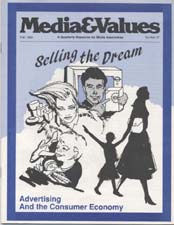MINORITIES: Ads Still Portray All-White Society
|
This article originally appeared in Issue# 37
|
The conventional wisdom about minorities in advertising goes something like this: In the bad old days, before the civil rights movement of the 1960s, minorities seldom appeared in mainstream media advertising. But the 1960s brought Awareness and Sensitivity, as well as Desegregation. Since then, minorities have taken their place alongside whites in the integrated world of advertising.
Well, you can't prove that by me. For the past three months I have been scrutinizing television and print advertising but I haven't seen many minorities, either alone or with white companions.
Sure, from time to time, you find an ad with a black or an Asian American. Occasionally there may even be a Hispanic or an Indian (meaning someone who looks the way the media feel Hispanics or Indians are supposed to look).
Ricardo Montalban sounds wonderful (and ethnically appropriate) proclaiming the romantic virtues of the Chrysler Cordoba (even though he had to put the accent on the wrong syllable). Actor James Hong has a sure hand with an American Express card. And I'm delighted that Houston Oiler quarterback Warren Moon can use the telephone as well as throw touchdown passes. But for the most part, advertising appears suspiciously like that same old segregated neighborhood that we knew before the 1960s supposedly brought us integration.
There are four notable exceptions. First, minority singers belting melodic sales pitches, Second, third, and fourth sports, food, and booze. Minorities may seldom be deemed proper for selling cosmetics or shampoo, but they sure can hype sneakers, hamburgers, and beer.
After all, wouldn't every young athlete like to be able to jump like Dr. J? Wouldn't every prospective NFL lineman or overweight ex-jock like to be as strong as Bubba Smith? And wouldn't everyone like to pig out and get paid for it like The Refrigerator?
Of course, minorities also appear prominently in all kinds of ads in minority media. That's known as market segmentation. If you are aiming for Ebony or Essence readers, use famous blacks or at least black models. If you want to reach Spanish International Network TV viewers, use Latinos. And the beat goes on.
Maybe I'm overstating the case. Or maybe I'm just a l960s dinosaur, victimized by too much hope for integration. Change comes slowly everywhere, including in advertising. But it's certainly time to hope — and work for a faster pace.



